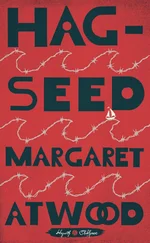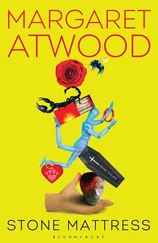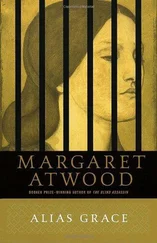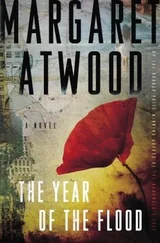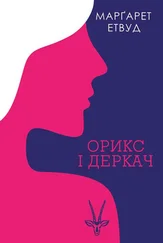Margaret Atwood - Cat's eye
Здесь есть возможность читать онлайн «Margaret Atwood - Cat's eye» весь текст электронной книги совершенно бесплатно (целиком полную версию без сокращений). В некоторых случаях можно слушать аудио, скачать через торрент в формате fb2 и присутствует краткое содержание. Жанр: Старинная литература, на английском языке. Описание произведения, (предисловие) а так же отзывы посетителей доступны на портале библиотеки ЛибКат.
- Название:Cat's eye
- Автор:
- Жанр:
- Год:неизвестен
- ISBN:нет данных
- Рейтинг книги:5 / 5. Голосов: 1
-
Избранное:Добавить в избранное
- Отзывы:
-
Ваша оценка:
- 100
- 1
- 2
- 3
- 4
- 5
Cat's eye: краткое содержание, описание и аннотация
Предлагаем к чтению аннотацию, описание, краткое содержание или предисловие (зависит от того, что написал сам автор книги «Cat's eye»). Если вы не нашли необходимую информацию о книге — напишите в комментариях, мы постараемся отыскать её.
Cat's eye — читать онлайн бесплатно полную книгу (весь текст) целиком
Ниже представлен текст книги, разбитый по страницам. Система сохранения места последней прочитанной страницы, позволяет с удобством читать онлайн бесплатно книгу «Cat's eye», без необходимости каждый раз заново искать на чём Вы остановились. Поставьте закладку, и сможете в любой момент перейти на страницу, на которой закончили чтение.
Интервал:
Закладка:
But Cordelia is long gone.
Chapter 9
T he school we are sent to is some distance away, past a cemetery, across a ravine, along a wide curving street lined with older houses. The name of it is Queen Mary Public School. In the mornings we walk across the freezing mud in our new winter overshoes, carrying our lunches in paper bags, and down through the remains of an orchard to the nearest paved road, where we wait for the school bus to come lurching toward us, up the hill and over the potholes. I wear my new snowsuit, my skirt wrapped around my legs and stuffed down into the bulgy legs of the snowpants, which whisk together as I walk. You can’t wear pants to school, you have to wear skirts. I’m not used to this, or to sitting still at a desk. We eat our lunches in the chilly dimly lit cellar of the schoolhouse, where we sit in supervised rows on long scarred wooden benches under a festoon of heating pipes. Most of the children go home for lunch, it’s only the school bus ones that have to stay. We’re issued small bottles of milk which we drink through straws stuck in through a hole in the cardboard bottle tops. These are my first drinking straws, and they amaze me.
The school building itself is old and tall, made of liver-colored brick, with high ceilings, long ominous wood-floored hallways, and radiators that are either on full blast or not at all, so that we’re either shivering with cold or too hot. The windows are high and thin and many-paned, and decorated with cutouts made of construction paper; right now there are snowflakes, for winter. There’s a front door which is never used by children. At the back are two grandiose entranceways with carvings around them and ornate insets above the doors, inscribed in curvy, solemn lettering: GIRLS and BOYS. When the teacher in the yard rings her brass handbell we have to line up in twos by classrooms, girls in one line, boys in another, and file into our separate doors. The girls hold hands; the boys don’t. If you go in the wrong door you get the strap, or so everyone says.
I am very curious about the BOYS door. How is going in through a door different if you’re a boy?
What’s in there that merits the strap, just for seeing it? My brother says there’s nothing special about the stairs inside, they’re plain ordinary stairs. The boys don’t have a separate classroom, they’re in with us. They go in the BOYS door and end up in the same place we do. I can see the point of the boys’
washroom, because they pee differently, and also the boys’ yard, because of all the kicking and punching that goes on among them. But the door baffles me. I would like to have a look inside. Just as there are separate doors for boys and girls, there are also separate parts of the schoolyard. At the front, outside the teachers’ entrance, is a dirt field covered with cinders, the boys’ playing field. At the side of the school facing away from the street is a hill, with wooden steps going up it and eroded runnels worn down the side, and a few stunted evergreens on top. By custom this is reserved for the girls, and the older ones stand around up there in groups of three or four, their heads bent inward, whispering, although boys sometimes make charges up the hill, yelling and waving their arms. The cement-paved area outside the BOYS and GIRLS is common territory, since the boys have to cross it in order to go in their door.
Lining up is the only time I see my brother at school. At home we’ve rigged up a walkie-talkie with two tin cans and a piece of string, which runs between our two bedroom windows and doesn’t work very well. We push messages under each other’s doors, written in the cryptic language of the aliens, which is filled with x’s and z’s and must be decoded. We nudge and kick each other under the table, keeping our faces straight above the tablecloth; sometimes we tie our shoelaces together, for signaling. These are my main communications with my brother now, these raspy tin can words, sentences without vowels, the Morse of feet.
But in the daytime I lose sight of him as soon as we go out the door. He’s up ahead, throwing snowballs; and on the bus he’s at the back, in a noisy whirlpool of older boys. After school, after he’s gone through the fights that are required of any new boy at any school, he’s off helping to wage war on the boys from the Catholic school nearby. It’s called Our Lady of Perpetual Help, but the boys from our school have renamed it Our Lady of Perpetual Hell. It’s said that the boys from this Catholic school are very tough and that they conceal rocks inside their snowballs.
I know better than to speak to my brother during these times, or to call his or any boy’s attention to me. Boys get teased for having younger sisters, or sisters of any kind, or mothers; it’s like having new clothes. When he gets anything new my brother dirties it as soon as possible, to avoid having it noticed; and if he has to go anywhere with me and my mother, he walks ahead of us or crosses to the other side of the street. If he’s teased about me, he will have to fight some more. For me to contact him, or even to call him by name, would be disloyal. I understand these things, and do my best. So I am left to the girls, real girls at last, in the flesh. But I’m not used to girls, or familiar with their customs. I feel awkward around them, I don’t know what to say. I know the unspoken rules of boys, but with girls I sense that I am always on the verge of some unforeseen, calamitous blunder. A girl called Carol Campbell makes friends with me. In a way she has to, because she’s the only school bus girl in my grade. The children who come on the school bus, who eat their lunches in the cellar instead of going home, are considered a little foreign, and are in danger of finding themselves without a partner when the bell rings and it’s time to line up. So Carol sits beside me on the school bus, holds my hand in line, whispers to me, eats her lunch beside me on the wooden bench in the cellar. Carol lives in one of the older houses on the other side of the abandoned orchard, closer to the school, a yellow brick house with two stories and green-painted shutters framing the windows. She’s a stubby girl with a frequent laugh. She tells me her hair is honey-blond, that her haircut is called a pageboy, that she has to go to the hairdresser’s every two months to get it done. I haven’t known there are such things as pageboys and hairdressers. My mother doesn’t go to the hairdresser’s. She wears her hair long, pinned up at the sides, like the women in wartime posters, and my own hair has never been cut. Carol and her younger sister have matching outfits for Sundays: fitted brown tweed coats with velvet collars, round brown velvet hats with an elastic under the chin to hold them on. They have brown gloves and little brown purses. She tells me all this. They are Anglicans. Carol asks me what church I go to, and I say I don’t know. In fact we never go to church.
After school Carol and I walk home, not the way the school bus goes in the morning but a different way, along back streets and across a decaying wooden footbridge over the ravine. We’ve been told not to do this alone, and not to go down into the ravine by ourselves. There might be men down there, is what Carol says. These are not ordinary men but the other kind, the shadowy, nameless kind who do things to you. She smiles and whispers when saying men, as if they are a special, thrilling joke. We cross the bridge lightly, avoiding the places where the boards have rotted through, on the lookout for men. Carol invites me to her house after school, where she shows me her cupboard with all her clothes hanging in it. She has a lot of dresses and skirts; she even has a dressing gown, with fuzzy slippers to match. I have never seen so many girls’ clothes in one place.
Читать дальшеИнтервал:
Закладка:
Похожие книги на «Cat's eye»
Представляем Вашему вниманию похожие книги на «Cat's eye» списком для выбора. Мы отобрали схожую по названию и смыслу литературу в надежде предоставить читателям больше вариантов отыскать новые, интересные, ещё непрочитанные произведения.
Обсуждение, отзывы о книге «Cat's eye» и просто собственные мнения читателей. Оставьте ваши комментарии, напишите, что Вы думаете о произведении, его смысле или главных героях. Укажите что конкретно понравилось, а что нет, и почему Вы так считаете.

